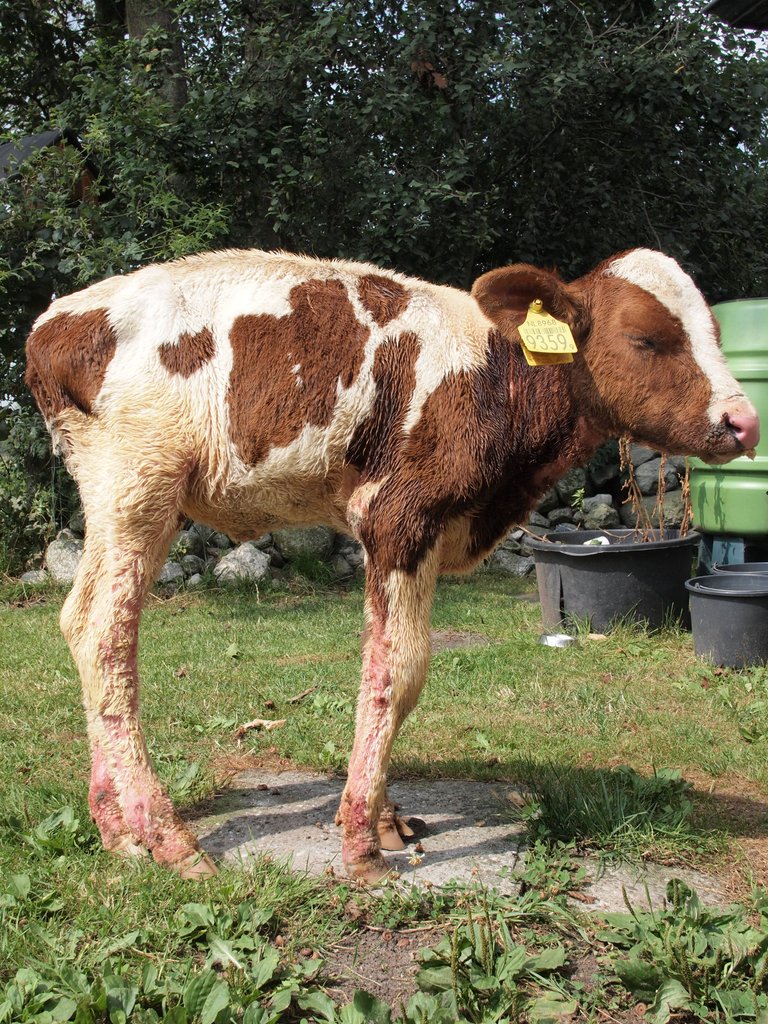The chances of Dermatophytosis spreading from animals to humans.
Do you know how disgusting it is to see ringworm on kids or humans, it is exactly the same feeling that farm owners or pet owners have whenever they notice a thing like ringworm on their beloved animal. Dermatophytosis is a fungal infection that gives such a physical trait.

source
It is an infection of the skin and hair, it is less likely to affect the hoof or the claw. Of all the classification of the infection, the most important pathogens of veterinary importance are;
Microsporum canis, which affects dogs, cats, and to a very lesser extent, larger animals too.
M gypseum are soil organisms that cause inflammatory lesions.
Trichophyton mentagrophytes, T verrucosum, and T erinacei are known to affect hedgehogs.
When an animal is healthy, and has dermatophytosis, it would self-cure on its own without any form of treatment, but it is also classified as a zoonotic disease because it causes skin lesions in people. Transmission is possible through direct contact with an infected animal, but random mere exposure does not always lead to disease.
The outbreak of the disease is said to be on the rise on an annual level, not only amongst humans but in cats and dogs too. Mostly prevalent amongst free-roaming animals, and hunting dogs. How severe the infection gets is seen in the overall health of the affected patients. A severe case of the infection is not immediately caused by constant contact with the infection, but rather based on the immune system of the host.
Over 90% of dermatophyte infections that occur in cats are caused by M.canis, which also infects humans and other species like; horses, cattle, dogs, goats, guinea pigs, monkeys, mice, and apes. There is research that has shown that dermatophytosis is more prevalent amongst female animals than the male, this means sex also plays an important role in the disease.
Some of the major predisposing factors are; overcrowding, stress, poor husbandry, concurrent underlying diseases, pregnancy, and malnutrition. Animal handlers need to understand even more, the essence of proper hygiene and the use of protective equipment. Disinfection of the premises is also very important.
The clinical signs of the disease are largely dependent on the species of the disease, the most common ones include; hair loss combination, hyperpigmentation, scaling, crusting, erythema, variable pruritus, and papules.. Dermatophyte infection in dogs causes lesions that are concentrated on the legs, face, and or the tail.
In order to detect the invasion of the disease, there are basically two ways to go; One is the direct examination of scale and hairs, and the other is through skin biopsy. Sometimes, bacterial pyoderma in dogs is usually misdiagnosed as dermatophytosis.
Based on a recent review, the conclusion was made that there is no one basic standard for the diagnosis of dermatophytosis, the tests are categorized into two;
- A test that shows the presence of an active infection to make an informed decision.
- The second is a test to confirm the absence of an active infection.
As mentioned earlier, the disease is a self-curing one in most cases, but animals should be treated in order to minimize the length of the disease's presence, as well as minimize its spread to other animals or humans.
References.
ksvdl.org/resources/dermatophytosis.html
Thanks for your contribution to the STEMsocial community. Feel free to join us on discord to get to know the rest of us!
Please consider delegating to the @stemsocial account (85% of the curation rewards are returned).
Thanks for including @stemsocial as a beneficiary, which gives you stronger support.